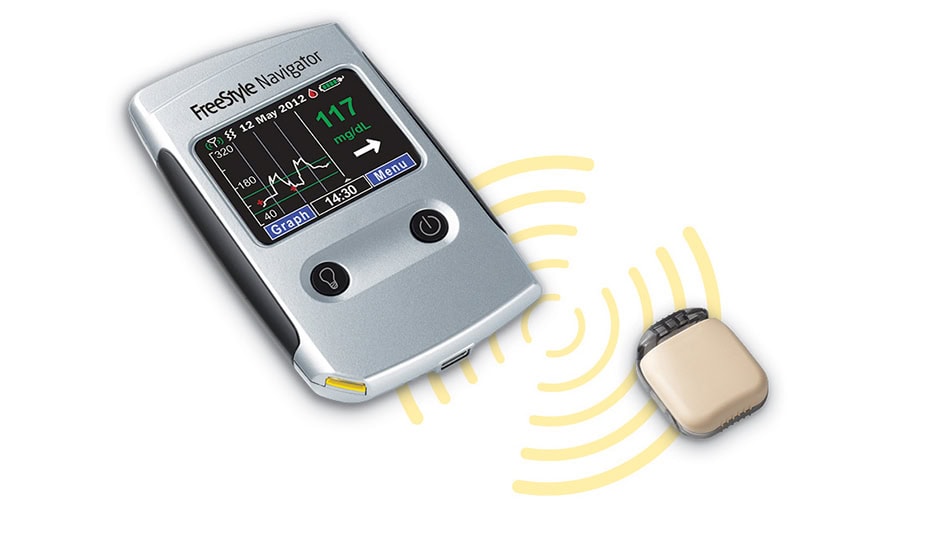UK Petition Asks Government to Pay for Costs of CGMs

Americans aren’t the only ones pushing their lawmakers to have government-sponsored healthcare programs cover the cost of continuous glucose monitors (CGMs). A UK petition for such coverage is slowly making progress in gathering sufficient signatures for the measure to be debated by UK lawmakers.
The effort is being led by Jamie Reed, Labour Party member of the House of Commons representing Copeland in northwestern England. Mr. Reed is on the Committee on Regulatory Reform, and from 2011 to 2015 he served as the Shadow Minister of Health.
The petition seeks coverage of CGMs, which now range in price from £1,000 to £2,500 [$1,295 to $3,240 U.S.] under Britain’s National Health Program for people with Type 1 diabetes. The out-of-pocket cost for supplies, an additional £50 [$65 U.S.] weekly, would be covered, as well.
Petitions, usually sponsored by a member of Parliament, are officially published and may, with 100,000 signatures, proceed to debate; they could eventually be filed as legislative bills unless they are rejected by the government. A 2015 CGM coverage petition had been rejected by the government as a matter outside the scope of Parliament’s responsibility.
Those opposed to government coverage of CGMs object primarily out of concern of the cost. Additionally, the National Institute for Health Care and Excellence (NICE), which sets patient care standards and advises the government on public health matters, has taken the position that CGMs should generally be confined to clinical, or physician-supervised, use. NICE’s diabetes practice standards, last revised in August 2015, recommends that CGM use be offered only to people with Type 1 diabetes who are struggling with glycemic control despite normal self-care measures. The NICE practice standards for children with Type 1 are relaxed somewhat in favor of CGM use.
In its response to the Reed petition, the government, through the Department of Health, stated on October 7 that “[p]reventing diabetes and promoting the best possible care for people with diabetes is a key priority for this Government. We are working hard to improve outcomes and quality of life for those living with diabetes or those who will develop it in the coming years.”
This statement struck a more moderate tone than the statement by the government rejecting the previous petition effort for CGM coverage: “In August 2015, NICE published guidelines which recommend that such devices should not be made routinely available to people with Type 1 diabetes unless they are willing to commit to using them at least 70% of the time and to calibrate them as needed (as well as meeting certain other criteria).”
Since the previous petition was submitted, there has been one major change in the UK government – it is now being led by someone with Type 1 diabetes. Theresa May, who has Type 1 diabetes, assumed the role of Prime Minister after her predecessor, David Cameron, stepped down in the aftermath of the Brexit vote. She served as a minister in the cabinet of Cameron’s administration, but not in a position that oversaw NICE coverage. In her rhetoric since being chosen as prime minister, May has not specifically discussed the issue of NICE coverage of Type 1 diabetes care.
The UK Health Program provides primary care, hospitalization, and prescription benefits for citizens of the four countries that make up the United Kingdom. Although insulin, oral diabetes medications, and eye exams are covered under the National Health Service in each country, other common non-diabetic medications are covered only for certain segments of the population. In practice, UK citizens who desire reimbursement for purchase of CGMs but who do not receive special consideration must pay out of pocket or turn to private insurance coverage.
INPUT Diabetes, an online patient advocacy group which has followed the public debate on pump and CGM usage, commented recently that adoption of pump technology in the UK had been a slow process compared to in the U.S. Funding for pump usage under the National Health Plan had involved a years-long campaign, the statement said. The expectation is that the campaign for CGM coverage may take years, as well.
Asked about the previously rejected petition and the chances of success with the newest petition, Mr. Reed answered by email that his mission is to keep the issue alive, in hopes of attaining sufficient signatures to open debate in Parliament, even if it doesn’t result in further legislative action.
“The debate itself would build awareness and political pressure,” Mr. Reed wrote. “It wouldn’t ensure CGM availability in and of itself, but it is an important step.”
His optimism seems undiminished, even though at the time we corresponded only 22,203 of the required 100,000 signatures had been gathered. Mr. Reed has Type 1 diabetes, as does his son, and describes himself as “captivated by emerging technologies.” His son recently switched from an insulin pen to a Abbott Freestyle Libre meter, the cost of which is out of pocket for his family.
He admits that it may be difficult for the government to “make expensive, long-term policy decisions with regard to technologies that are advancing at a rapid pace.” Nevertheless, he argues that the savings of such an investment may pay off.
“Investing up front will save a lot of money (and productivity, and lives) in the long run and will clearly more than pay for itself,” he wrote. “So for me, improving blood sugar control isn’t just about the obvious individual benefits. It’s about being fiscally responsible and safeguarding the future of the NHS.”
10/24/2016 – Due to editorial error, an earlier version of this article inaccurately stated that the Freestyle Libre was a pump. The text has been corrected.
Thanks for reading this Insulin Nation article. Want more Type 1 news? Subscribe here.
Have Type 2 diabetes or know someone who does? Try Type 2 Nation, our sister publication.